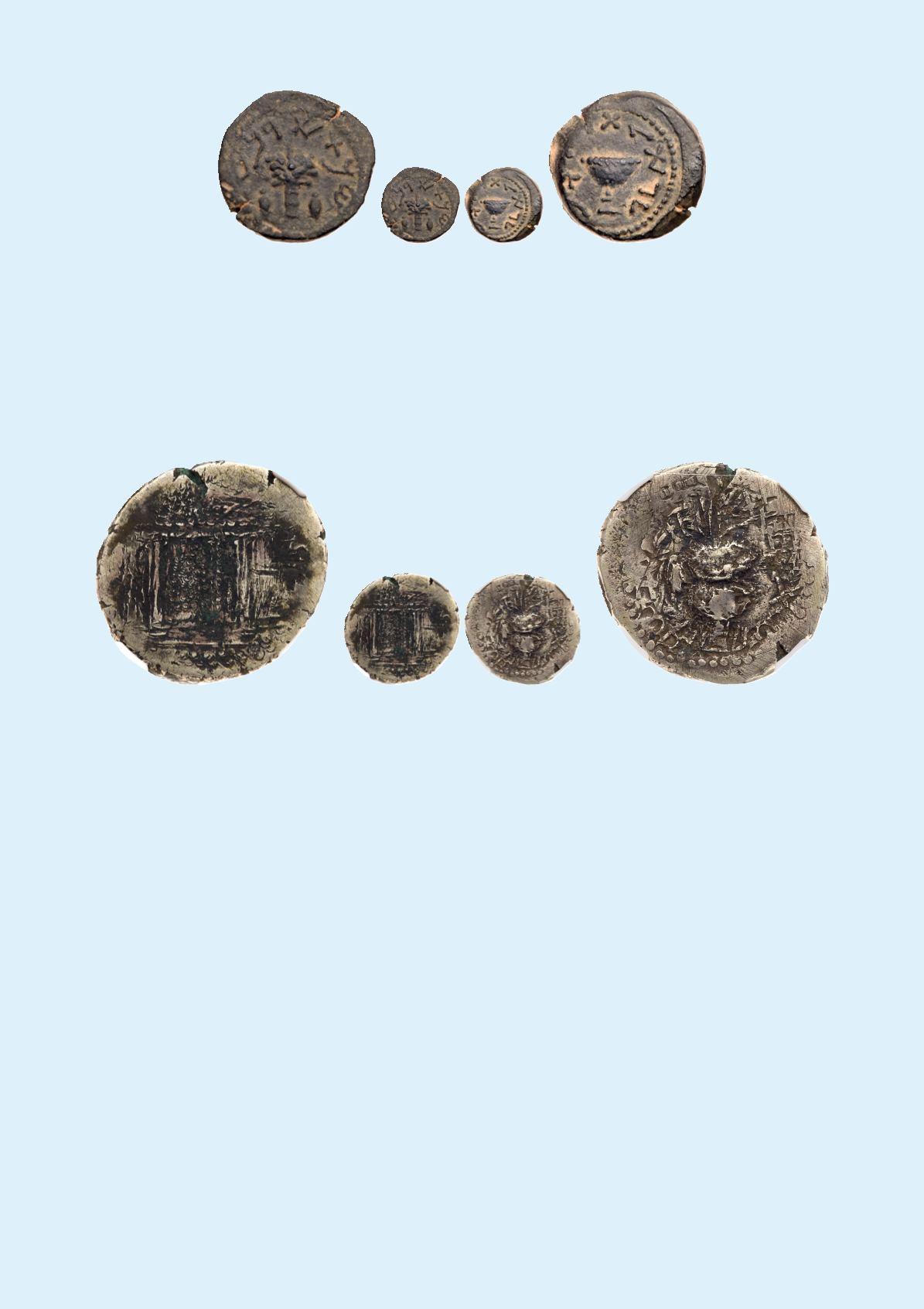

278
Judaea, The Jewish War. Æ Eighth (4.03 g), 66-70 CE. Jerusalem, year 4 (69/70 CE). ‘Year four’ (Pa-
leo-Hebrew), lulav branch flanked by an etrog on either sider. Rev. ‘To the redemption of Zion’ (Pa-
leo-Hebrew), chalice with pearled rim. Hendin 1369; TJC 214. Small planchet. Nice green patina. Choice
Very Fine.
$300
From the Dr. Patrick Tan Collection.
Unique Silver Trial Year One Silver Sela
279
Judaea, Bar Kokhba Revolt. Silver Sela (13.81 g), 132-135 CE.
Irregular issue
. Year 1 (132/3 CE). ‘Jerusalem’
(Paleo-Hebrew), tetrastyle façade of the Temple of Jerusalem; show bread table or Ark of the Covenant
in chest form with semicircular lid and short legs, seen from a narrow side. Rev. ‘Year one of the redemp-
tion of Israel’ (Paleo-Hebrew), lulav with etrog at left. Hendin 1373a (this coin); Mildenberg -; TJC 218e.
Extremely Rare
- unique and perhaps a trial strike. The Hendin plate coin. NGC grade F; Strike: 2/5, Sur-
face: 2/5. Scratches.
$5,000
From the Dr. Patrick Tan Collection.
The Bar Kokhba War (132-135 CE) broke out when Hadrian decided to refound Jerusalem - still largely ruined from the di-
sastrous Jewish Revolt (66-73 CE) - as the pagan city of Aelia Capitolina. Although Jewish discontent had already erupted into
violence in the Diaspora during the reign of Trajan, the Jews of Judaea seem not to have risen up against the Romans until
this threatened abomination against the site of the Temple and the surrounding Holy City. The leader of this new rebellion,
which took the form of a bloody guerilla war, was a certain Simon bar Kokhba who had messianic pretensions and gained a
reputation as a great warrior. Unfortunately, although Bar Kokhba managed to make Hadrian pay dearly for Aelia Capitolina,
when the emperor assembled an army of six full legions to invade Judaea in 134 CE the rebellion was soon crushed. In punish-
ment almost the entirety of Judaea was laid waste by the victorious Romans and the Jewish population destroyed or driven out.
In order to fund the rebellion, Bar Kokhba and his supporters used what circulating coins they could find or capture from the Ro-
mans and restruck them with new types more suitable for their revolutionary purposes. The most remarkable and desirable of the
new types were used for the silver sela overstruck primarily on Syrian and Phoenician tetradrachms. The obverse features a depic-
tion of the façade of the Jerusalem Temple with an uncertain object inside, which has been variously interpreted as the show bread
table or the Ark of the Covenant. It has been suggested that the Bar Kokhba rebels actually intended to rebuild the Temple, but the
presence of either the show bread table or the Ark - items lost at the end of the Jewish Revolt or earlier - seems to imply that the
image represents the idea of the Temple to rally support rather than any real edifice planned by the Bar Kokhba rebels. The reverse
type looks back to the coinage of the Jewish Revolt in its depiction of the lulav and etrog associated with the Festival of Tabernacles.



















